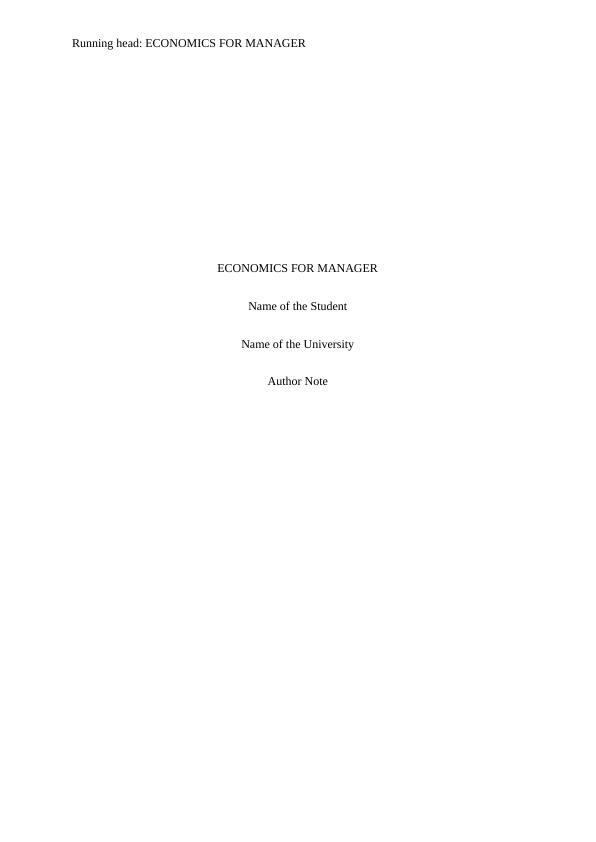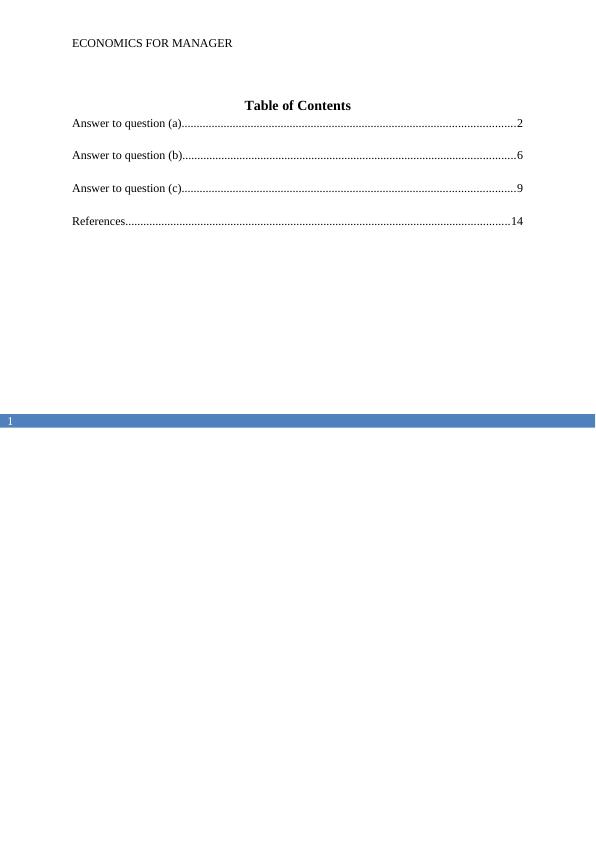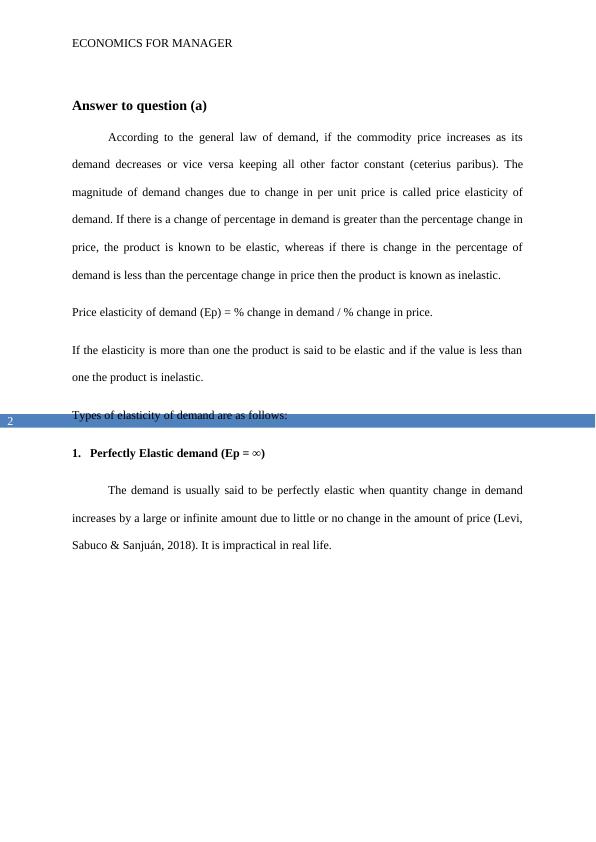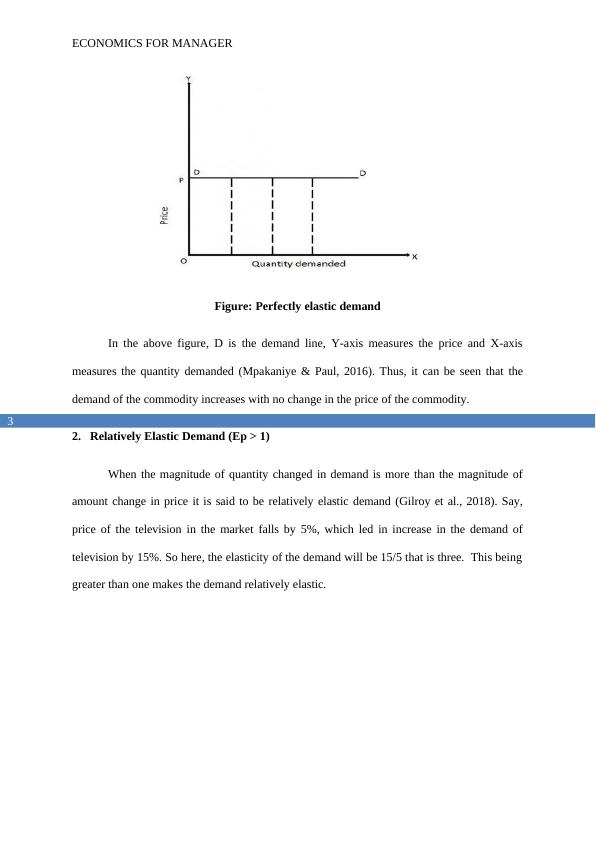Applied Economics for Managers -
Added on 2022-08-31
19 Pages4508 Words21 Views
End of preview
Want to access all the pages? Upload your documents or become a member.
Economics for Manager Question Answer 2022
|23
|4871
|13
Types of Demand Elasticity in Managerial Economics
|14
|3439
|60
Factors Affecting Price Elasticity of Demand
|12
|2791
|209
Economics Essay: Price Elasticity, Oligopoly, Climate Change
|15
|4167
|70
Price Elasticity of Demand for Tobacco, Starbucks Coffee, and Oil
|12
|3036
|47
Economics of Managers Question Answer 2022
|21
|4495
|20




